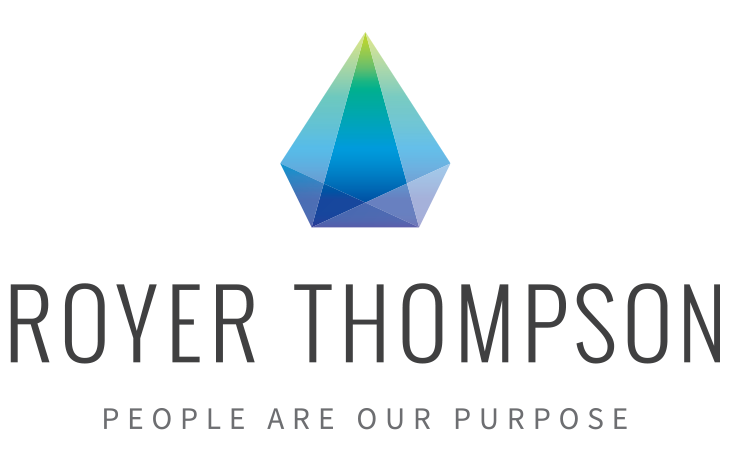
29 Oct Why Career Transition Matters
Today’s organizations are in constant evolution and are required to consistently recalibrate, ensuring the right people are in the right roles. This means that good people who have added value and contributed to the organization may no longer fit the ever-changing needs. When these decisions are made, employers often provide career transition services as part of the severance package. The common message that we hear from employers who request our services is that they want to provide support and set the exiting employee up for future success.
Our 2018 Termination & Severance Practices in Canada study conducted in collaboration with Verity Career Management showed that “employers have multiple motivations for providing career transition support.” Here are the top three reported in this study:
-

74% Do the Right Thing | Provide Job Skills to Exiting Employee 56% | Risk Mitigation 48%
Whether you are an individual being let go from your role or a part of a large downsizing, being treated with integrity and respect is important. Even if you see the writing on the wall before it happens, being told you no longer have a job can create an overwhelming sense of vulnerability, fear and worry. Employers who take a thoughtful approach to making the tough decision to exit an employee understand the impact that this could potentially have. Providing the support during such a transition can be truly life changing.
Oftentimes, exiting employees do not know what to expect with regards to the type of support they will receive and may be apprehensive to reach out. Early engagement and onsite support can be important in helping these employees understand how career transition can help them. 70% of our clients strongly agree and 20% agree that onsite support was very helpful to them the day of their termination. In our experience, we have a higher success rate with engagement when there is support as early as the day news is given to the employee.
Furthermore, we commonly see that employees are not equipped to enter the labour market with the tactical tools and skills necessary to be successful in finding the right opportunity. 70% of our clients strongly agree and 20% agree that the tactical support provided to ensure resumes, cover letters and social media platforms and that exiting employees were labour market ready was very helpful. The same statistics apply to being equipped with the skills to network and interview effectively. Every individual has their own unique story, while some want to jump right back into another job, others want to retire, start their own business or take time to reflect and rethink what they want in a career. This may include clarifying values and recognizing the importance of cultural and job fit. In these cases, supporting individuals through a self-discovery can make a profound difference in their future. 90% of our clients have reported that the coaching and guidance to support them through this journey was very helpful.
Our study also indicated the top reasons that are driving decision-making regarding employee terminations:

The study identified a change from organizational structure being reported as the main factor for terminations in the former years (2014 & 2016) to individual performance being reported. Given our collective experience along with the results of our study, individual performance may be under-reported. When business strategies change and organizational structures need to evolve, underperforming individuals may be packaged out as part of this process therefore making it hard to know the true statistics on performance related terminations. With that said, organizations are under more pressure in today’s climate requiring them to transition talented employees out, thus normalizing and raising the importance of providing career transition. The perception is changing and just because this talent may no longer fit one employer’s needs, with the right support, they can thrive in another organization.
Regardless of the reason for terminating employees, employers recognize that how they treat exiting employees sends a message to those remaining in the organization. The data from our study “indicates that risk mitigation is a growing concern for companies as 48% of respondents picked it as a major factor in 2018.” While risk mitigation can be thought of as protecting the organization from legal backlash, we would point out that it is also about protecting the perception and reputation of the organization both internally and externally.
How an employer determines the appropriate length of a career transition program is the same as criteria used when determining the financial component of the severance package. Our study reports these top four criteria as:
- Job Level
- Length of Service
- Expected Difficulty of Job Search
- Age of Employee
The study also discovered that four to eleven-month programs are becoming more frequent. Specifically, at the executive level organizations are offering four to six-month programs. These statistics are very much aligned with what our clients are asking for. We are experiencing requests to provide four to six-month programs at the more senior level while we see one to three-month packages requested for front line to mid-management levels. The more tenured the employee(s) the more generous the allotted time generally becomes.
The shorter programs are focused on setting up individuals with the tactical tools and skills to enter the labour market with confidence. While, the more in-depth programs allow for time to take individuals on more of a reflective and self-discovery journey with a stronger coaching element. For example, those tenured employees who have grown their careers within the organization may want to take the time to pause before jumping into the next opportunity. While those who have shorter tenure or have a longer runway may want a quicker turnaround. These are just examples and it is important to reiterate that every situation is unique. No career transition journey is alike. However, the common theme we have observed is that there are positive outcomes for individuals going through career transition when objective and compassionate support is offered through a facilitated proven process.
When we connect with our career transition clients, they are dealing with the news that something they have invested their time, energy and effort into has ended or will be ending. It is hard to see new beginnings on the horizon. William Bridges speaks to the three stages of transition – endings, neutral zones and new beginnings. He explains that “transition always starts with an ending.” Career transition professionals and coaches meet people at an ending and help them through the neutral zone – the messy middle of change – guiding individuals from being in their most vulnerable state to finding excitement in the possibility of something new.

Our report was a good reminder that employers see the importance of incorporating this offering in severance packages. While this service can sometimes feel like a checkbox on a termination list in a Human Resources Department, it is good to see the statistics that employers want to do the right thing when they are required to exit employees from an organization. Furthermore, as employers become increasingly pressured to become nimble and agile, they are required to take a thoughtful approach to ensure they have the right people in the right roles. This ultimately will lead to tough decisions around restructuring, aligning talent strategy to the business strategy and exiting good talent. Employees and potential future employees are paying attention to how employers treat individuals in these most difficult situations.

AMANDA PENNY CHARTERED HR PROFESSIONAL
Senior Director | Org. Performance & Career Transition
P. (902) 422-2099 (ext 223)
E. apenney@royerthompson.com

